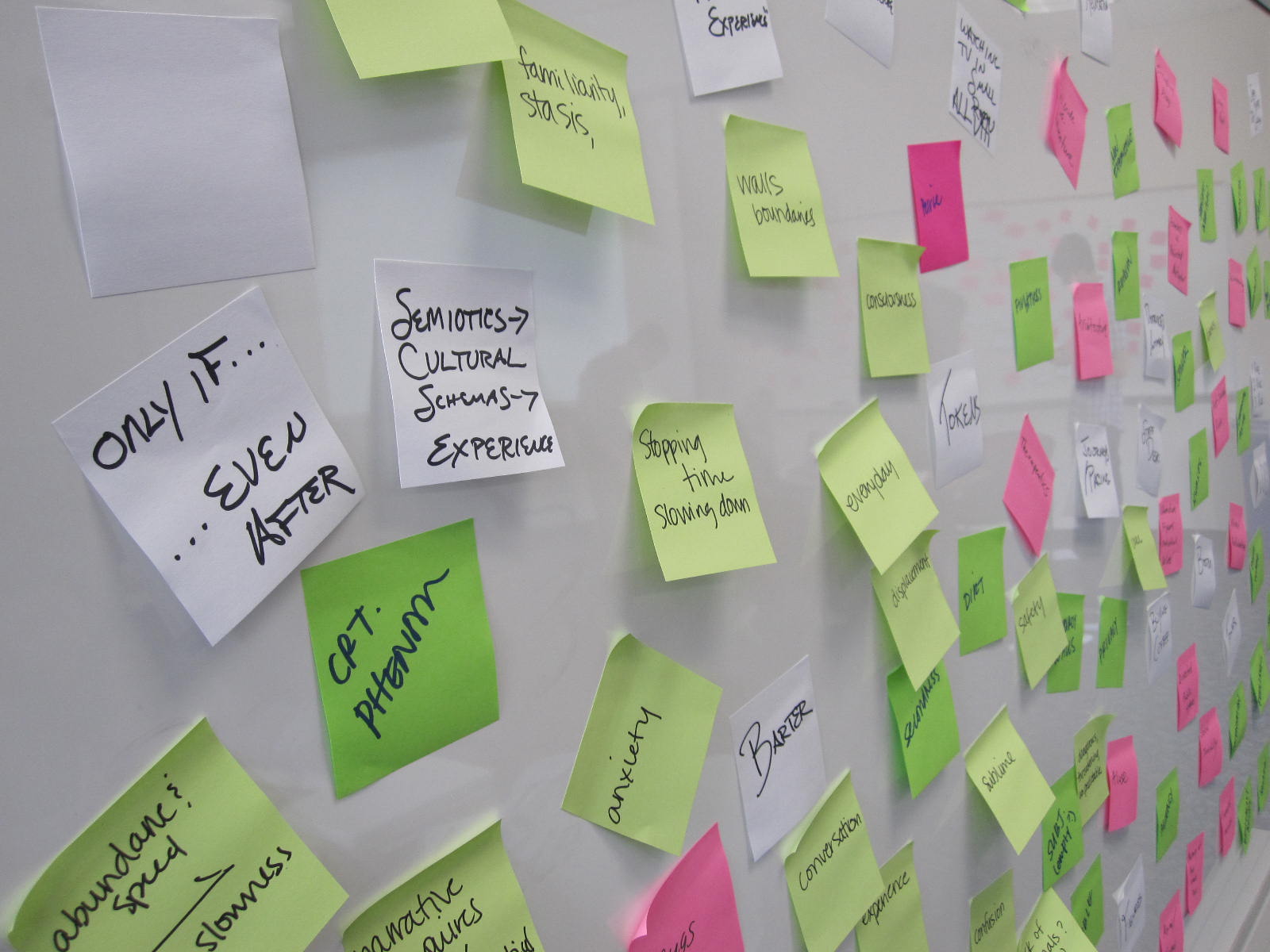 Just received news of this experiment at UC Irvine: Ethnocharette. Keith Murphy and George Marcus have documented a process of exploring a text (Robert DesJarlais’ Shelter Blues) through a studio-style design process. The website details the process and the results. It’s always a bit hard to understand exactly how this kind of process works for people or how it’s different from a seminar discussion, for instance, or the creation of “reading responses,” but given the smiling people in the photographs, it looks like it worked. Having spent my fair share of time struggling with new media technologies from wikis to blogs to collaborative editing, there is something nice about exploring the limits of a very simple tool: post-it notes. I’ll try this out in my classes this year I think…
Just received news of this experiment at UC Irvine: Ethnocharette. Keith Murphy and George Marcus have documented a process of exploring a text (Robert DesJarlais’ Shelter Blues) through a studio-style design process. The website details the process and the results. It’s always a bit hard to understand exactly how this kind of process works for people or how it’s different from a seminar discussion, for instance, or the creation of “reading responses,” but given the smiling people in the photographs, it looks like it worked. Having spent my fair share of time struggling with new media technologies from wikis to blogs to collaborative editing, there is something nice about exploring the limits of a very simple tool: post-it notes. I’ll try this out in my classes this year I think…
3 thoughts on “Ethnocharette: The Post-It Note as technology”
Comments are closed.
I love this video by my students, wehave2saveurparentz, about post its, commenting, and YouTube: “10 Views on YouTube.”
Chris, thanks for brining this to our attention. FYI, I just replied to the Ethnocharrette blog as follows,
“Keith, George,
“The process you describe is in some ways very similar to the brainstorming and planning sessions in which I participated while working for Hakuhodo, Japan’s 2nd largest advertising agency (1983-1996). The post-it notes taped to the wall were extremely evocative in this regard. Then, on reflection, I began to note differences.
“Your students read a book. A creative team receives a brief, typically including the target profile, the desired effect on the target, the proposition, a brief rationale, explaining why communicating this proposition to that target should achieve the desired effect, and a list of imperatives and warnings. The list includes the medium for which the ad is made, the client’s preferences in tone and manner, and client taboos that should be respected.
“Your students jotted down bits from the book that they found evocative. In the creative meetings in which I participated, the medium was A4-size sheets of paper instead of post-it notes and the content creative ideas, copy, sketches, rough story-boards, etc. In every case, the creator’s mission was to transcend the brief, to come up with something that while “on strategy” would add something fresh.
“Your student’s were encouraged to explore a variety of new approaches. The same is true of advertising creatives; but the latter are constrained by client wishes, budgets—and deadlines. Everyone involved knows that the goal is to come up with two, three or four ideas for presentation to the client at a pre-set date and time. The result is a process that begins with “let a thousand flowers bloom” but, then, as the deadline approaches becomes sharply focused on selection and refinement.
“When I taught advertising and marketing at Sophia University in Tokyo, it was, I found, the focusing and refinement that my students found most challenging. So I find myself wondering how ethnocharrette will feed into the research plan/grant proposal writing that will be the inevitable next step for those who pursue careers as anthropologists.”
thanks for this commentary, chris. i would be interested in a response from the pov of the ‘composition’ modality that you experimented with in teaching fieldwork at rice (and now at ucla?). post-it notes are an orthodox tool of design studios (which have also been critically discussed) to which we are not wedded, but we need some other alternatives. The text focus is mainly something to start with, convenient for an exercise that is not course-based, or research-based –for the moment. What is the alternative in the ‘composition’ studio, or charrette?